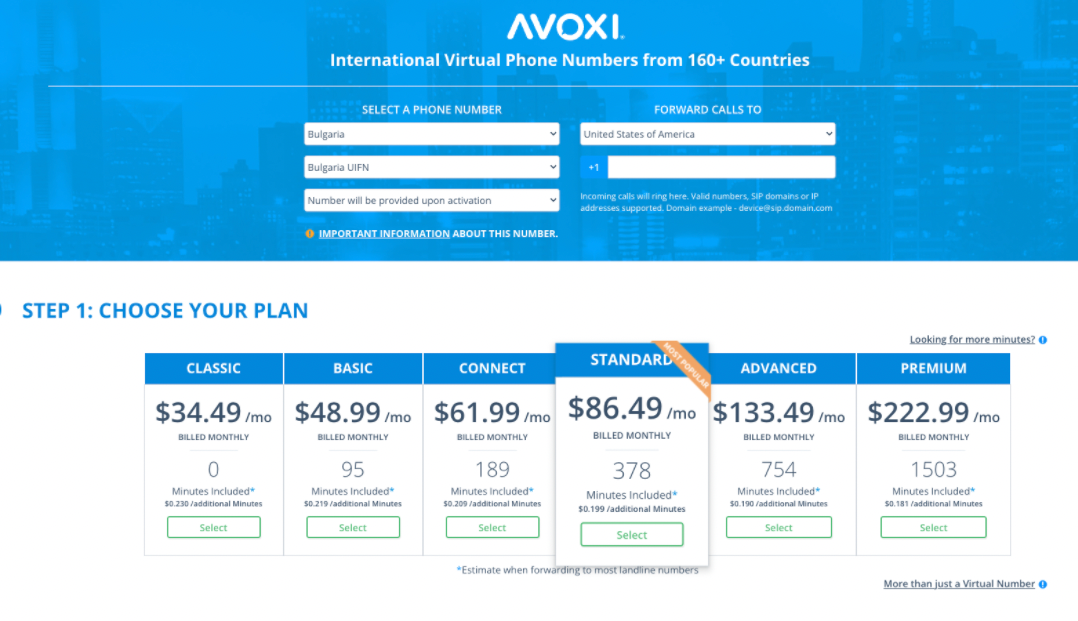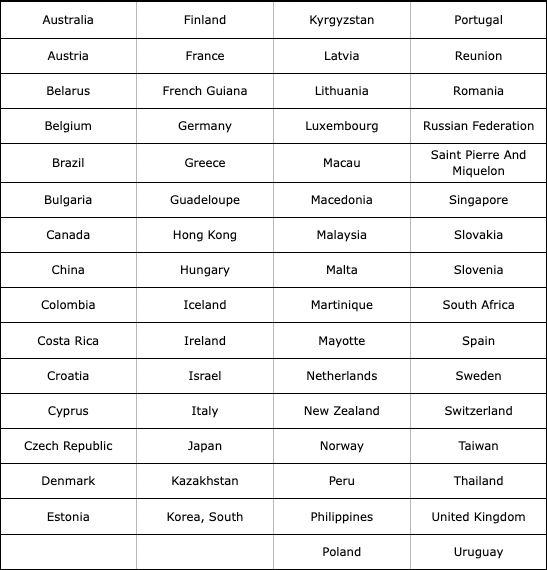A Universal International Freephone number, also known as a UIFN, can be called from multiple countries around the world. Like a Toll-Free Number, customers can reach a business without being charged for the call. However, the UIFN service is regulated by the International Telecommunication Union (ITU). and can only be accessed from the +/- 60+ countries participating in the program. These phone numbers consist of a 3-digit country-specific code followed by 8 digits. This means your UIFN number is 11 digits long, longer than other more traditional phone numbers.
UIFN Pricing and Requirements
All AVOXI Customers have the ability to provision/purchase UIFN numbers directly from our online shopping. With six packages to choose from based on your unique calling needs, which includes our Premium (Extreme) plan suited to high-usage customers. These popular business numbers come with the below requirements and restrictions:
- UIFN must be registered in at least two (2) of the 60+ countries and typically requires a $500.00, one-time setup fee.
- Costs are based on each selected country, meaning the more countries accessing the number, the higher the price.
- UIFN has a different dialing format to toll-free numbers and is not as easily recognizable.
- When you buy an AVOXI virtual number, there are no setup fees or minimum contracts.

Participating Countries
Below is a complete list of all 60+ participating countries with inventory available via our online shopping cart.
UIFN Benefits (Pros)
- Easily Accessible: Customers can now instantly provision a UIFN number from 60+ locations via their online cart. With the ability to directly add a package of their choice, they no longer need to complete an inquiry form and await a quote.
- Business multiple locations: A UIFN is an excellent tool for companies with customers in different countries across the globe who don’t want to purchase individual ITFS numbers for each location.
- Cost Saving: When compared to different types of virtual phone numbers, like an ITFS or local telephone number, the cost of a UIFN may seem expensive. However, it’s important to note that a UIFN is a toll-free number that works in roughly 60 countries. If used correctly, this, in conjunction with their cost savings, makes them a massively robust communication tool.
UIFN Disadvantages (Cons)
Initial Setup Costs: These numbers have a once-off registration fee associated with them; businesses are also required to have a minimum of 2 x numbers.
Limited Availability: These phone numbers are only accessible in roughly 60 countries. If a business is doing business outside those countries, they will still need additional phone numbers to be fully reachable to all your customers.
Dialing Issues: These numbers are formatted differently than a traditional local phone or ITFS number. That means there may be a learning curve for your customers when it comes to dialing these phone numbers. Any company looking to utilize this phone number should be aware of that.
How do UIFN Numbers Work?
Since Toll-Free numbers can only be dialed from within the country, there was a push from consumers to have a number that can be dialed from any country. The culmination of this push was the Universal International Freephone Number. A block of 60 countries got together and made the same number available across borders so it could be called in multiple countries.
This works on the back end because the number is multiple toll-free numbers with the same dialing method. When a customer requests one, we apply for a number with the digits the customer requests in the countries that they want them from. When we register that number, no one else can register it as it belongs to the end-user. That being said, these toll-free numbers behave a little differently than regular ITFS.
- A country-specific code that must be dialed before the UIFN can be found on the Coverage and Restriction Matrix, which can be found here.
- There are more restrictions for UIFNs than there are for toll-free numbers. These can also be found on the Coverage and Restrictions Matrix.
- UIFNs act like ITFS and should be treated the same.
Our informative Comparison Article teaches us about UIFN vs. ITFS and Which Is Right for your business.


